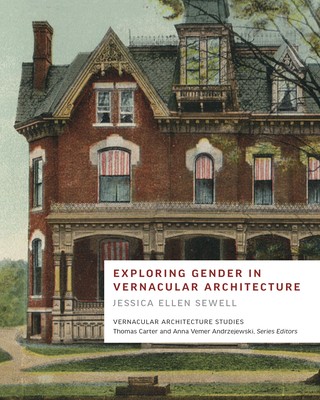
- We will send in 10–14 business days.
- Author: Jessica Ellen Sewell
- Publisher: Univ Tennessee Press
- ISBN-10: 162190931X
- ISBN-13: 9781621909316
- Format: 20.3 x 25.4 x 1 cm, minkšti viršeliai
- Language: English
- SAVE -10% with code: EXTRA
Reviews
Description
In Exploring Gender in Vernacular Architecture, Jessica Ellen Sewell considers the gender of those who create and shape spaces, how gender ideology contributes to and manifests itself in built form, and what research methods make the observation of gendered experience possible. She discusses single-gender, mixed-gender, and queer spaces, providing a comprehensive look at how gender influences the design and construction of those spaces, how those spaces are used, and the relationship between gender and the broader architectural landscape. In her study, Sewell also provides an expansive view of how gender intersects with other categories of power and difference, such as race, class, and age, and how this intersectionality contributes to the design and use of built spaces.
In addition to examining the spaces themselves, Sewell explores research methods for studying gendered experiences in architecture. She argues that traditional research methods in vernacular architecture studies, which often focus on building-based fieldwork, should be complemented by other methods--such as letters, oral histories, and diaries--that expand the understanding of buildings beyond their construction date and reveal how those buildings have been used and represented over time. Digging into primary records, Sewell posits, can help challenge our assumptions about who influences architecture and urban development, illuminating the roles of women and others in the building and shaping of space. Thoroughly researched yet accessible for scholars new to the study of vernacular architecture, Exploring Gender in Vernacular Architecture bridges the gap between specialized scholarship and broader public understanding. Students of architectural history, gender studies, and cultural history will find it a valuable resource not only for examining the relationship between gender and architecture, but for engaging new methodological tools that may further their own research.EXTRA 10 % discount with code: EXTRA
The promotion ends in 23d.09:07:54
The discount code is valid when purchasing from 10 €. Discounts do not stack.
- Author: Jessica Ellen Sewell
- Publisher: Univ Tennessee Press
- ISBN-10: 162190931X
- ISBN-13: 9781621909316
- Format: 20.3 x 25.4 x 1 cm, minkšti viršeliai
- Language: English English
In Exploring Gender in Vernacular Architecture, Jessica Ellen Sewell considers the gender of those who create and shape spaces, how gender ideology contributes to and manifests itself in built form, and what research methods make the observation of gendered experience possible. She discusses single-gender, mixed-gender, and queer spaces, providing a comprehensive look at how gender influences the design and construction of those spaces, how those spaces are used, and the relationship between gender and the broader architectural landscape. In her study, Sewell also provides an expansive view of how gender intersects with other categories of power and difference, such as race, class, and age, and how this intersectionality contributes to the design and use of built spaces.
In addition to examining the spaces themselves, Sewell explores research methods for studying gendered experiences in architecture. She argues that traditional research methods in vernacular architecture studies, which often focus on building-based fieldwork, should be complemented by other methods--such as letters, oral histories, and diaries--that expand the understanding of buildings beyond their construction date and reveal how those buildings have been used and represented over time. Digging into primary records, Sewell posits, can help challenge our assumptions about who influences architecture and urban development, illuminating the roles of women and others in the building and shaping of space. Thoroughly researched yet accessible for scholars new to the study of vernacular architecture, Exploring Gender in Vernacular Architecture bridges the gap between specialized scholarship and broader public understanding. Students of architectural history, gender studies, and cultural history will find it a valuable resource not only for examining the relationship between gender and architecture, but for engaging new methodological tools that may further their own research.

Reviews